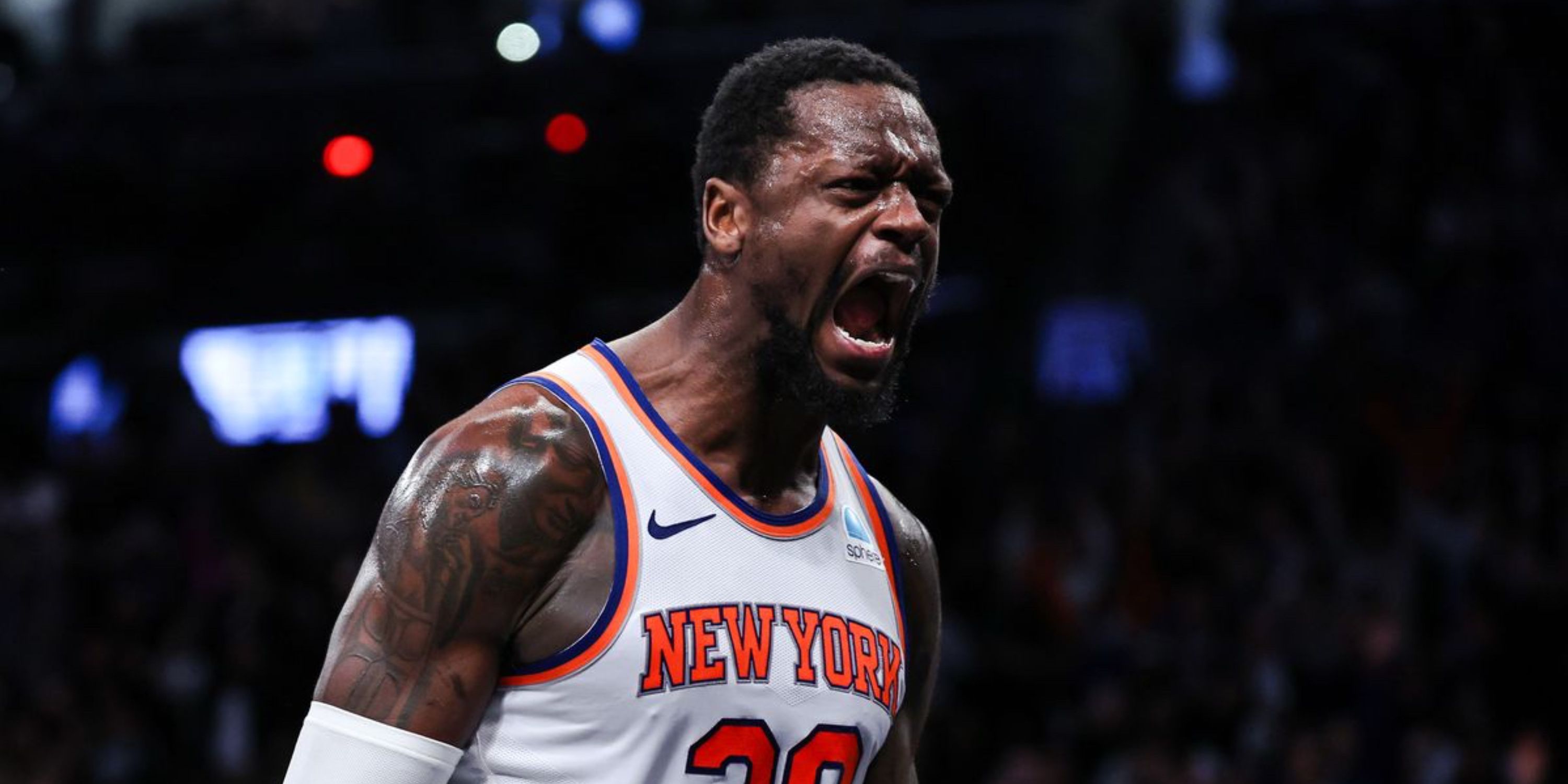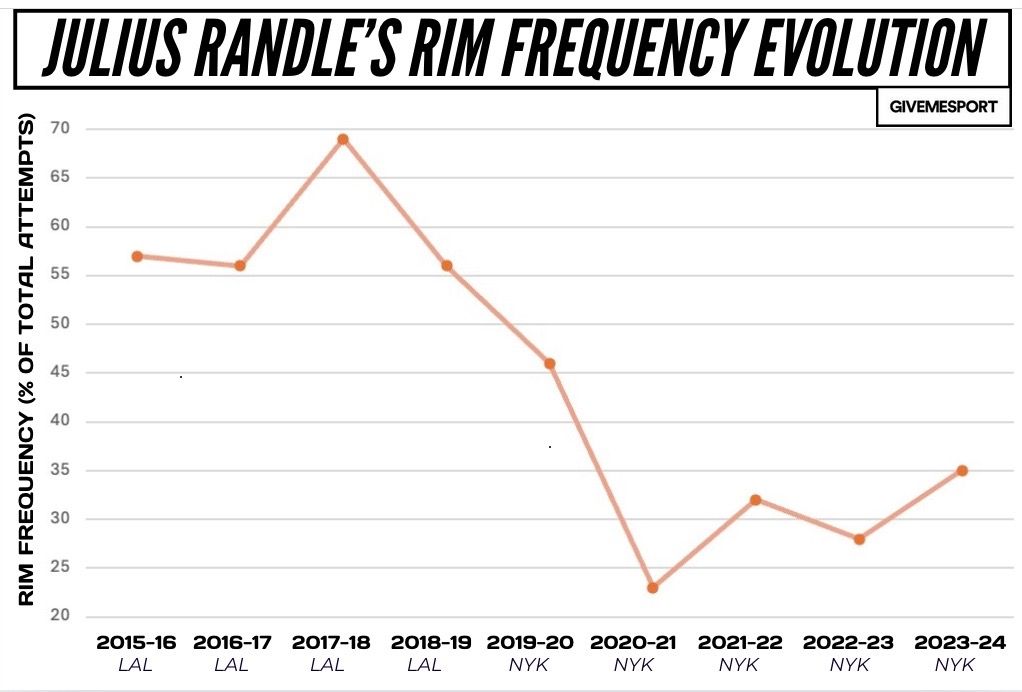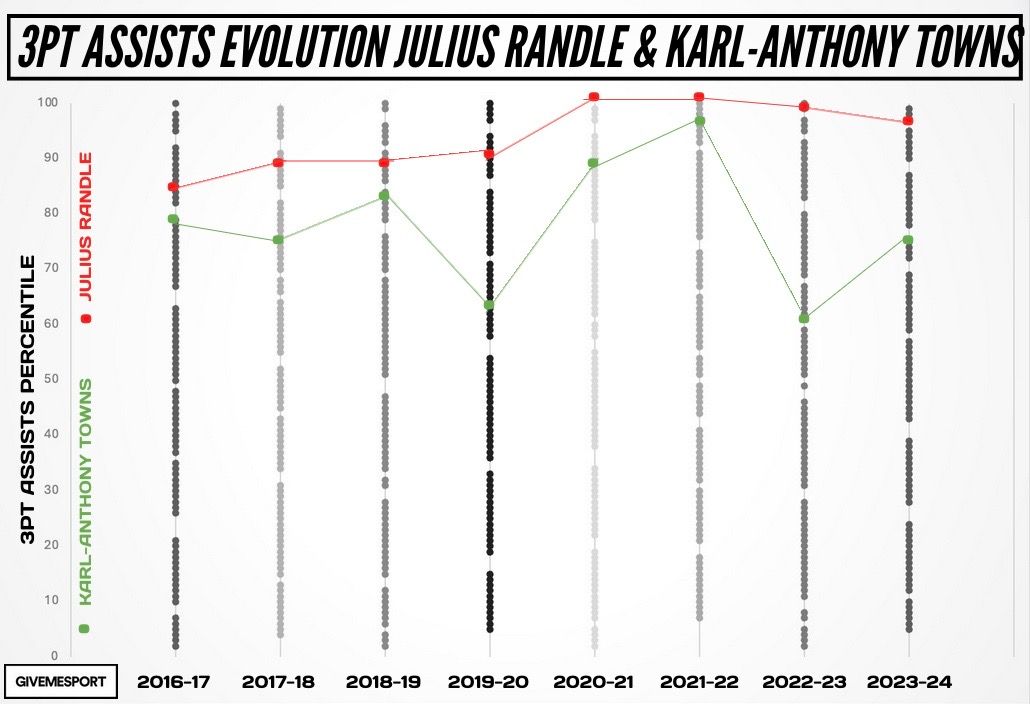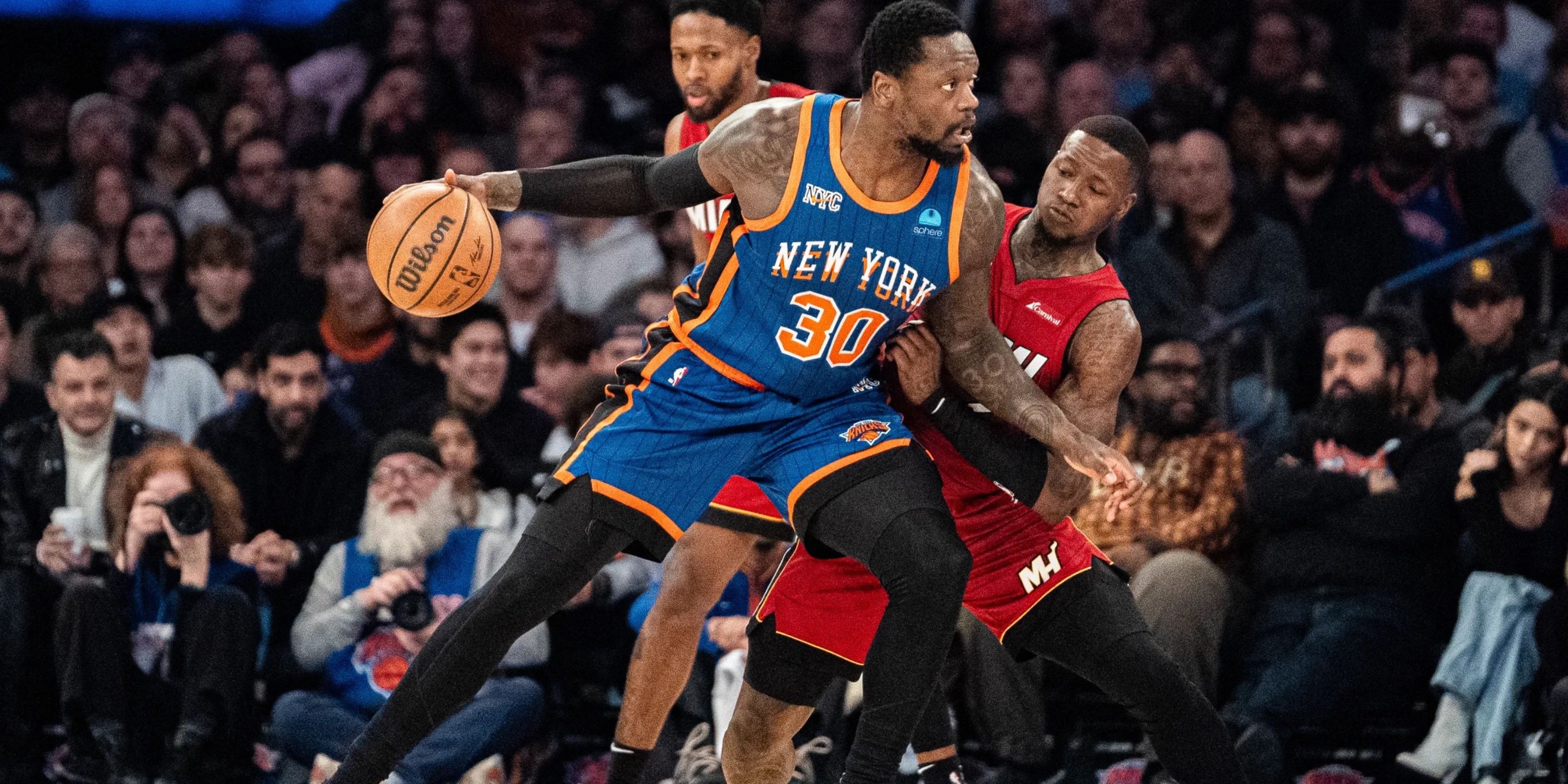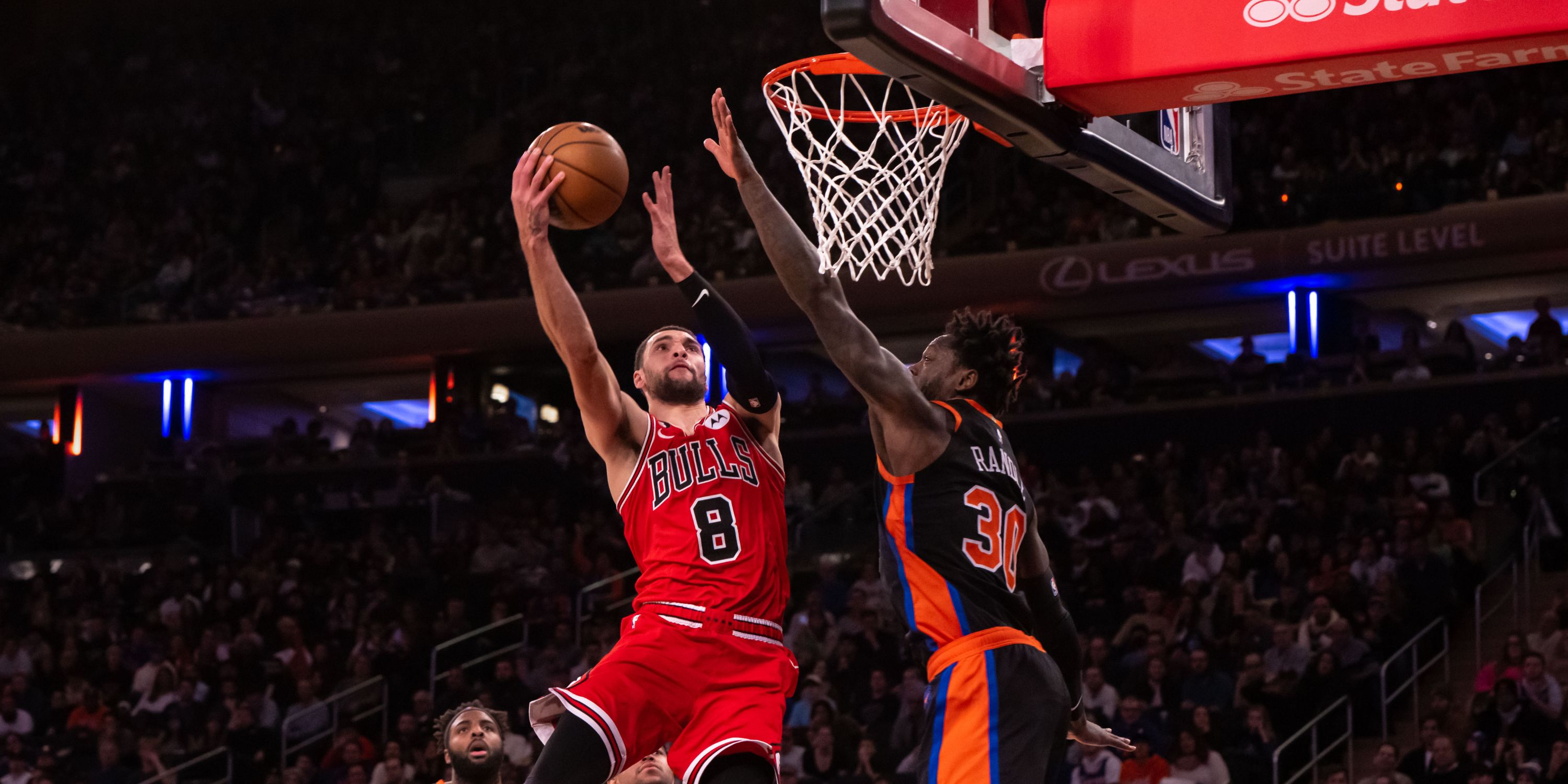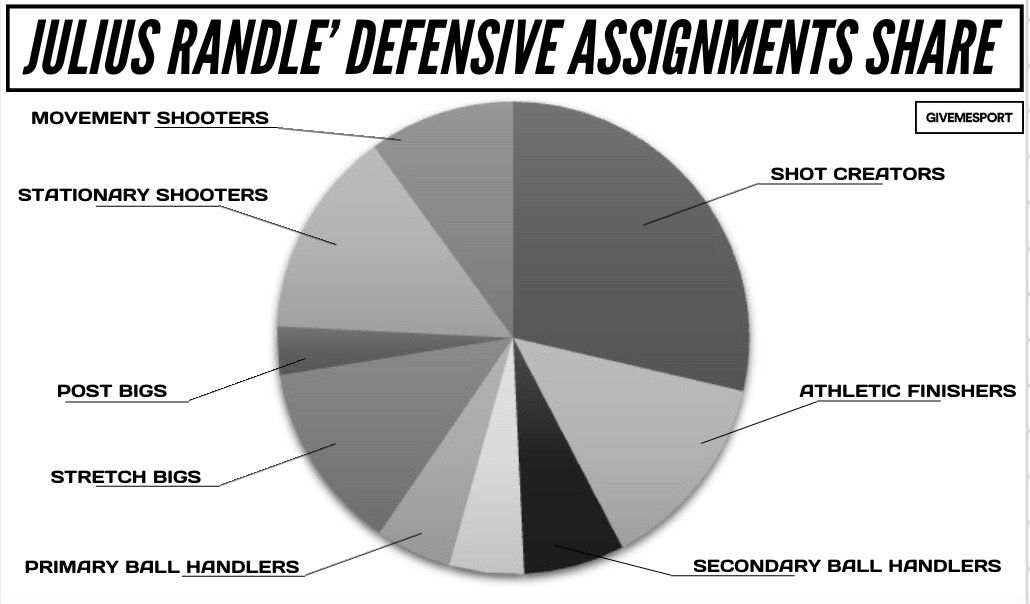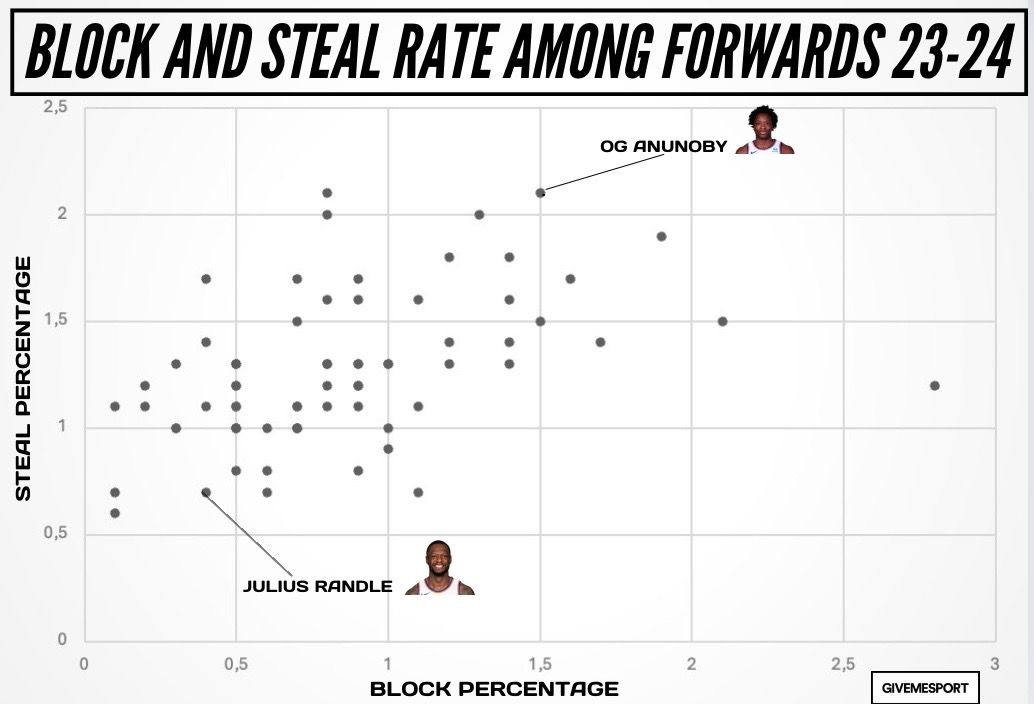Highlights
- Julius Randle must maintain his significant driving volume and leverage the spacing to apply pressure on the rim.
- Randle’s post-ups have been detrimental to New York’s offense; he should opt for elbow touches instead.
- Randle’s defensive role will evolve following the acquisitions of Bridges and Anunoby; better awareness and activity will be needed.
The last time the
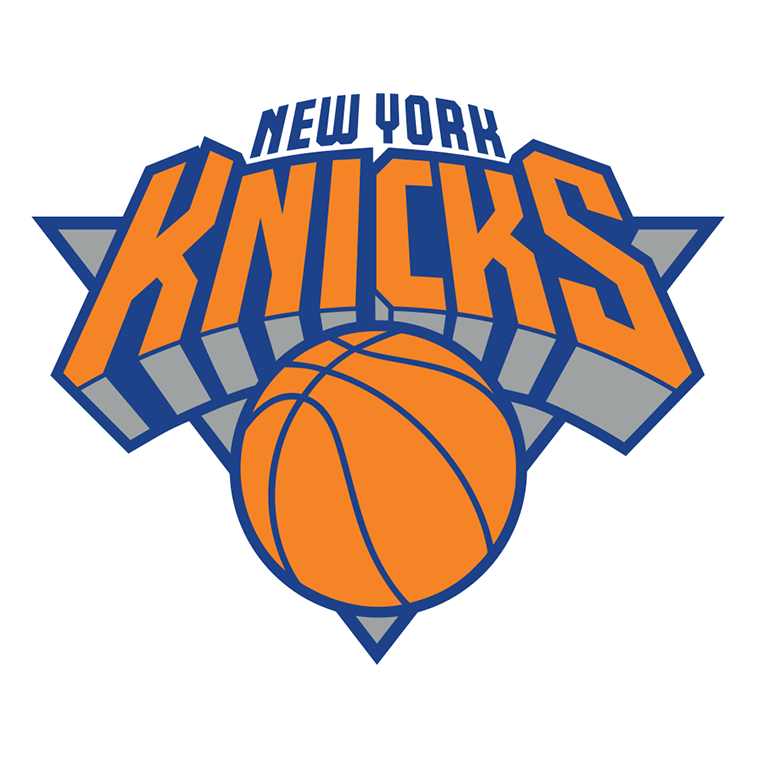 New York Knicks
New York Knicks
reached the Conference Finals, New Yorkers were debating whether Seinfeld’s finale did the show justice, The Yankees were celebrating their 26th World Series title, and the city’s iconic yellow cabs were more likely to have a CD player than a GPS.
Michael Jordan
had retired for the second (but not final) time,
Tom Thibodeau
was already barking out defensive assignments from New York’s sidelines as an assistant, and
Jalen Brunson
was just about to turn four.
Nearly a quarter-century later, after decades of prolonged mediocrity and mismanagement, the Knicks are finally back where they belong—contending for the ultimate prize. The acquisition of
Mikal Bridges
in exchange of five first-round picks and the signing of
OG Anunoby
to a new five-year, $212 million contract are the definite testaments to their ambitions.
For them to complete their ascension back to the top, they must return where it all began—with
Julius Randle
. The 2014 draftee was the initial cornerstone of the Knicks’ resurgence, as he became the first Knicks player since
Carmelo Anthony
in 2013 to earn All-Star and All-NBA Second Team honors in the same season in 2020-21.
An overpowered forward with some infuriating tendencies, yet possessing the driving force and ruthless strength to bend entire defenses, Randle is poised to be New York’s most decisive figure next season. And to elevate the Knicks to the highest of heights, Randle must focus on three crucial adjustments.
1
Driving Is King
Randle’s penetrations will be key to New York’s offensive synergy
About eleven years ago, iconic
NBA
coach and former General Manager of the Knicks Phil Jackson declared in an interview with SI.com that basketball was “a simple game”, that the objective was to get the ball close to the basket, and that there were three fundamental means to do so —passes, drives, and offensive rebounds.
The Knicks are very good at the latter trait — they ranked first in offensive rebounds percentage last season—, but they tend to struggle with pressuring the rim beyond that. Powered by
Jalen Brunson
, a slippery guard that carves up defenses with spasmodic movements in the midrange, the Knicks only ranked 22nd in rim frequency last season.
In turns, that meant the Knicks only had the 20th most efficient shot diet in the league.
The best-suited candidate to address this suboptimal rim pressure is Julius Randle. The former Kentucky Wildcat took over 50 percent of his total attempts at the rim in each of his first five seasons in the league, and he ranked above the 90th percentile in unassisted (or self-created) rim field goals in seven out of his nine NBA seasons. Although he shifted away from rim attempts in favor of midranges —sometimes due to contextual factors—while burgeoning on the Knicks, it’s entirely plausible to envision him ramping up his rim aggression once again.
Randle attempted 35 percent of his total attempts at the basket prior to his injury last season, which marked the highest figure since his first season in the Big Apple. Within New York’s revamped offensive structure, the 29-year-old will be operating under the best conditions to rekindle his paint dominance. In 350 minutes alongside OG Anunoby last season, Randle’s accuracy around the basket nearly reached the 70 percent mark, which would rank in the 80th percentile at his position.
When Randle lowers his shoulder and powers through defenders on drives, using his unique blend of strength and agility at 6-foot-9, he ignites the spark needed to set New York’s offense ablaze. His driving force not only creates scoring opportunities for himself but also opens up high-quality looks —layups and threes— for his teammates.
The two-time All-Star boosted his driving volume to nearly 14 drives per game last year, and that renewed aggressiveness must carry into next season. By attacking the rim with poise and spraying the ball out when defenses collapse onto him, Julius Randle has the potential to significantly enhance the analytical profitability of New York’s shot profile.
2
Less Post Touches, More Elbow Touches
Randle’s post-ups have been detrimental to New York’s offense
When Julius Randle went down in late January, the Knicks shifted towards a movement-heavy offense, leveraging
Isaiah Hartenstein
’s vision as a central hub and mitigating their spacing concerns. Since Hartenstein is now with the
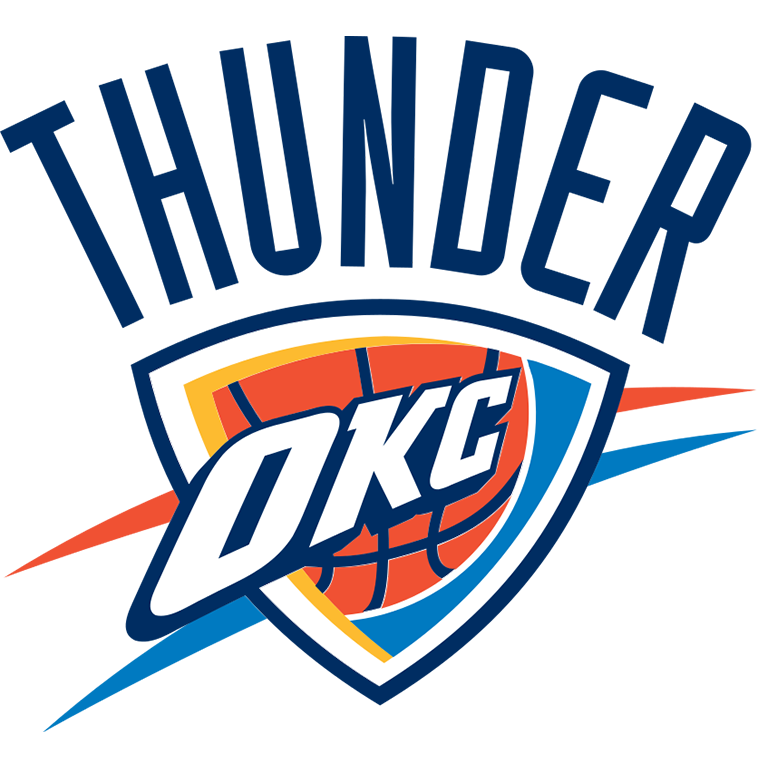 Oklahoma City Thunder
Oklahoma City Thunder
and with Randle set to return, the Knicks are expected to revive their bi-heliocentric offense, with their two All-Stars sharing the creation burden once again.
To spark advantages through Randle’s imposing frame as a forward, the Knicks often isolated the two-time All-Star on the block with his back facing the basket. Last season, post-ups accounted for approximately 15 percent of Randle’s offensive possessions—a figure that will need to be drastically reduced if the Knicks aim to fully unlock their offensive potential.
Out of all players with at least 100 post-ups on the season, Randle ranked 10th worst in efficiency at 0.90 points-per-play. Among all those qualifying players, only
Domantas Sabonis
had a worse turnover frequency rate than Randle.
Instead of relying on those sloppy post-ups, the Knicks should pivot to incorporating more “Elbow” touches into their offense. Randle received the ball around the elbows only twice per game last season, despite yielding significantly higher efficiency compared to his traditional post-ups.
|
Julius Randle’s Offensive Efficiency |
||||
|---|---|---|---|---|
|
Offensive Category |
Touches /g |
Field Goal % |
Assist % |
Turnover % |
|
Elbow Touches |
2.0 |
61.1% |
18.9% |
8.9% |
|
Post-Ups |
2.8 |
40.0% |
9.3% |
11.6% |
From those elbow positions, Randle can leverage his ambidextrous driving style to target defenders frontally. This setup allows him to better identify double teams in his peripheral vision and make swift, intuitive decisions on the fly rather than from a static, back-to-the-basket position.
When defenders ultimately load up on his isolations or if his attacks stall, positioning Randle at the elbow will further enable him to seamlessly engage in two-man dynamics on the wing. That way, the Knicks could replicate some of the fiery, unpredictable synergy they developed last season using constant handoffs to shooters stationed on the wings or in the corners.
To unlock their full offensive potential and build on the dynamism they showcased last year, the Knicks and Randle must nail those structural, “X’s and O’s” wrinkles.
3
More Defensive Activity
A more reactive defensive role awaits Randle
The successive acquisitions of OG Anunoby and Mikal Bridges won’t only impact Randle’s approach on offense; they will also entirely redefine his defensive responsibilities.
Last season, Julius Randle was primarily used as a “wing stopper” by Thibodeau and his staff, meaning that he defended high-end shot creators on most of his defensive possessions. The five players he spent the most possessions matching up against were
Giannis Antetokounmpo
,
Jaylen Brown
,
Kawhi Leonard
,
Kyle Kuzma
, and
Karl-Anthony Towns
.
With Anunoby and Bridges—two of the league’s most tenacious defensive stoppers—both projected to play starter minutes next season, Randle’s defensive role is set to evolve. Transitioning from smothering self-made scorers in man-to-man situations, Randle will now have to focus on executing timelier rotations from the weakside, running more shooters off the line, and jumping steadier passing lanes.
Indeed, acknowledging the scale of the task ahead is crucial.
Randle’s new role will command stronger commitment to team defense and greater disruptiveness; two redeeming qualities that have rarely been used to describe the Dallas-native’s defense. With his modest 6-foot-10 wingspan and albeit inconsistent awareness or motor on defense, Julius Randle had the second-lowest steal rate in the league at his position last year. His teammate OG Anunoby ranked first.
Randle also barely contests — let alone blocks — any shots around the basket, as he never ranked above the 25th percentile in block percentage since joining the Knicks.
His substantial offensive load has often been cited as an explanation for his defensive lapses, but other primary offensive options like
Luka Dončić
,
James Harden
, or
LeBron James
usually find ways to add value with their instincts and awareness as team defenders. In his new role, Randle’s attention to the finer details of defense will be more crucial than ever.
This is where Randle’s greatest challenge truly lies: he must genuinely commit to make it work.
If he doesn’t, his time in New York may well end with a trade in the coming months for a more intuitive fit. But if he rises to the occasion, if he fully embraces the weight of the moment, Julius Randle has the potential to elevate this Knicks team in ways no other player they might realistically acquire could.
No pressure, Julius—just a legacy-defining season ahead.
Unless otherwise noted, all stats used here come from NBA.com, cleaningtheglass.com, dunksandthrees.com, basketball-reference.com, pbpstats.com bball-index.com.
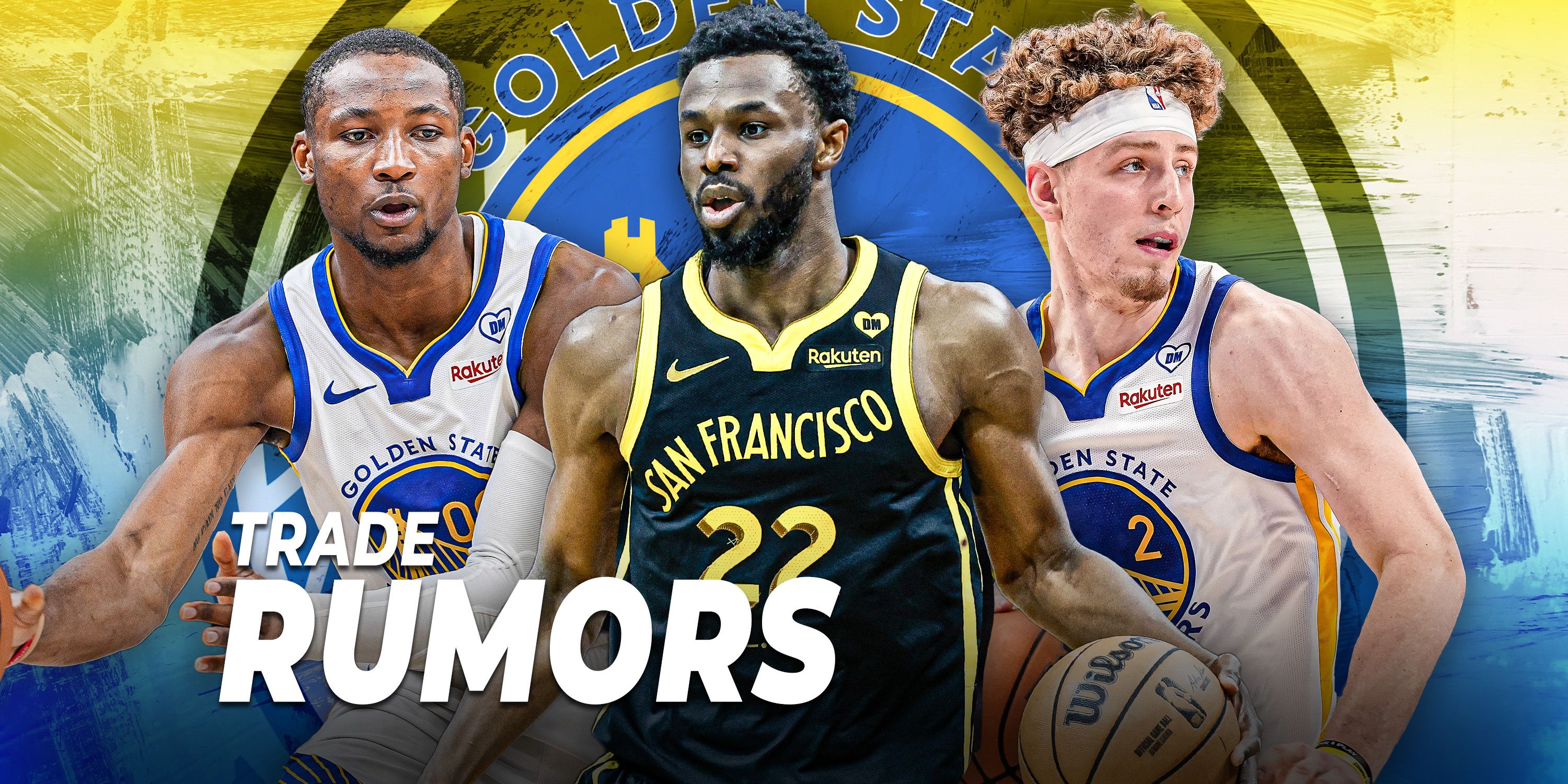
Related
NBA Trade Rumors: Golden State Warriors Trade Targets and Candidates
The Warriors lost franchise legend Klay Thompson to the Mavericks this offseason, but they’re still in the hunt to make a major addition.
